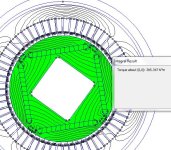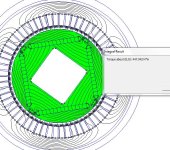does this match your idea?
arlo:
in the past i have done something similar which is to have a common DC supply feeding two inverters driving two
separate motors and this worked really well and i have a patent on how to do breaking without actually needing additional parts for this topology which is cool but not useful for EV as you want regen not dynamic break.
i've never seen this done as you propose, your idea slightly different. same DC source, same two inverters sharing DC source .. and even same driving two separate 3-phase windings like i have done, but in your case the windings are all within ONE motor which is different and so far as i know is unique.
what i was thinking as a topology for EV is same as yours except that the two floating neutrals are the same point electrically connected. i think if they are separated you may have some circulating current issues but i haven't really given it much thought. probably pros and cons to both methods
for now my plan is to use 144Vdc bus because of what miz said on other forumn is that the lower (but not too low) voltage will allow for easier battery configuration. is that too low for you? it would be great if we have a common application and can work together.



